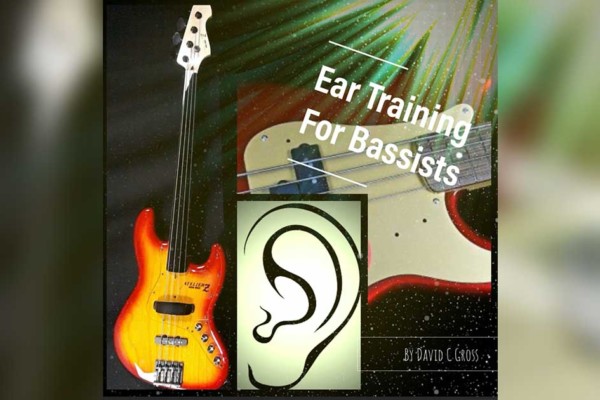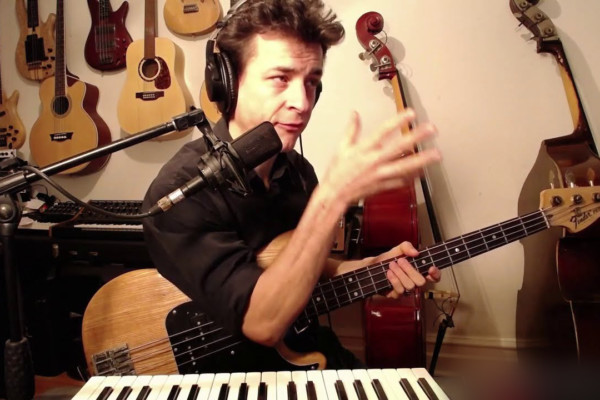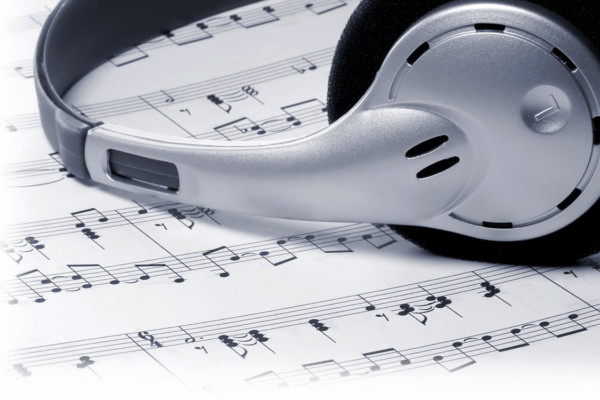The Lightbulb Moment: Listening For Movement

Ear training can be a challenge, especially if reading music or watching videos has been your primary way of learning the instrument. Like anything we haven’t practiced, it takes time, patience, and a willingness to look for clues. One thing that I’ve learned from students is that everyone hears and processes music in different ways, but when it comes to ear training, the greatest universal challenge is hearing how different notes function. Which note pinpoints the root of a chord? And how do certain notes serve as part of a groove or voice-leading line? Without knowing the difference, we can over or under complicate a part. We unknowingly trick ourselves into thinking that something is far more challenging than it actually is. Or, we skip over the details and play an over-simplified version that doesn’t quite do justice to the harmony of the song. Hearing the difference requires listening for macro vs. micro movement.
As we begin tackling this concept, let’s define “macro movement” as the overall harmony—the chord changes or “chord progression.” To be a functioning bass player, we need to be aware of the changes and of how the notes we play outline or define the chords. If we’re just pedaling a root note, that’s totally cool, and a very appropriate way to define the chord. If we happen to be playing the triad or arpeggiating a seventh chord, then we’re defining the chord with even greater specificity. Either could be appropriate, depending on the musical context or genre. By listening for this macro movement, aka, the chord progression, we can better serve our “primary function” as the bass player.
Micro-movement can take on two roles. First, it can be the notes that make up a bass line. This could be chord tones, notes in the scale, or even chromatic motion. If they are used to play a particular pattern (and one that is often repeated), then we can consider those notes as part of the bass line or groove. Then, we have notes that serve the function of voice-leading or signifying when we’re moving from one chord to another. These can also be chord tones, notes in the scale, or chromatic motion. That said, they’re often used to specifically lead to another chord. Function is the name of the game. And, it’s possible to have a bass line where some of the notes serve both functions: they’re part of the groove and they lead us to the next chord.
Now let’s take a look at a song and determine the macro vs. micro movement. A perfect example is “I’ll Take You There” by The Staple Singers. The macro movement would be the notes C and F, the root notes of the chord progression, C Major to F Major. Each chord is played for one bar, or four beats, with the root note, played on beat one. That’s it; they repeat over and over again. C – F – C – F until people get tired and go home. This can also be referred to as “I – IV” in C Major, meaning that C is our tonal center and we’re moving from the tonic chord to the “four” chord or a major chord built on the fourth note of the major scale.
Micro-movement would be the individual notes of the bass line or the groove that we all know and love. They pull from the major scale and rely on the root note, the 5th, and the 6th scale degrees. They are played in such a way that we can’t help but get the groove stuck in our head; they flow so effortlessly that perhaps we don’t even think about the fact that they define the chord progression. It’s so natural and iconic that we don’t realize how successfully we’re outlining the chords.
If you’ve never stopped to think that this bass line defines the two chords, C and F, then I’ve got an experiment for you. Refrain from playing the groove. Put the recording on and only play the note C. Hold it down for one measure and then play an F for one measure. Then move back to C and repeat. By doing this, you’re playing the defining notes of the harmony: the root notes of the chords. While you’re not playing the groove, you should still hear that this works. You’re playing the correct note over the correct chord. This is the macro movement.
So why is it important to identify this macro movement? It’s so that you can make informed decisions when you play songs, learn bass lines, improvise, and jam. You can kick off a jam session with “I’ll Take You There” and have it morph into something else, all while playing the same chord changes, C – F. By breaking away from the bass line, or the micro movement, you can keep the integrity of the chord changes but move the music in another direction. Or, you can jam with some friends and say, “Hey, how about we start by playing C to F.” You start with just root notes, then create a bass line, and then massage it into the groove for “I’ll Take You There.” All of the sudden, you’ve made clever choices and evolved the jam into something tangible: a song.
While this is a fairly easy and accessible example, know that you can apply this concept to any song you’re learning. Listen critically and try to focus on the macro movement. Musical context can help with this; it’s very common for guitar players or keyboard players to adhere to playing one chord over a whole bar or perhaps multiple bars. This clearly defines the macro movement and can often serve as a clue. Once you’ve acknowledged the chord progression, the micro movements might fall magically into place. You realize, “oh wow, this bass line is actually just a triad starting on the root note” or “all they’re doing is playing a descending major scale.” There’s a good chance that all of those musical choices revolve around targeting the root notes of the chord progression. So, grab your bass, pull up a song, and start listening for different types of movement.
Ryan Madora is a professional bass player, author, and educator living in Nashville, TN. In addition to touring and session work, she teaches private lessons and masterclasses to students of all levels. Visit her website to learn more!



